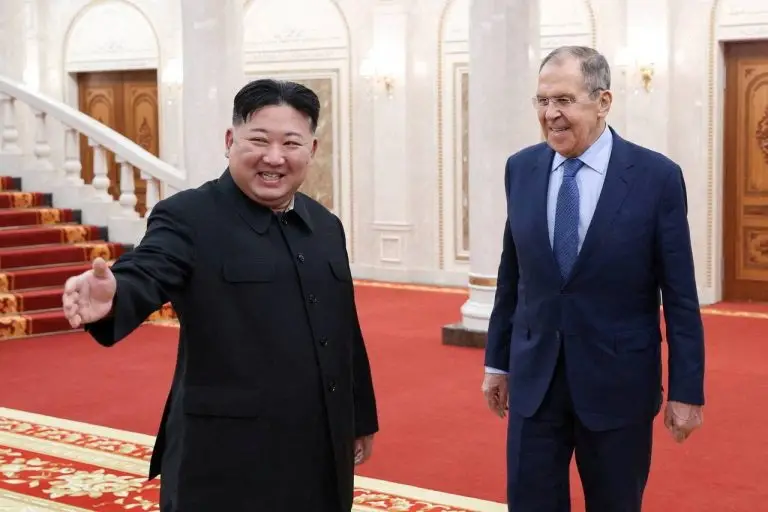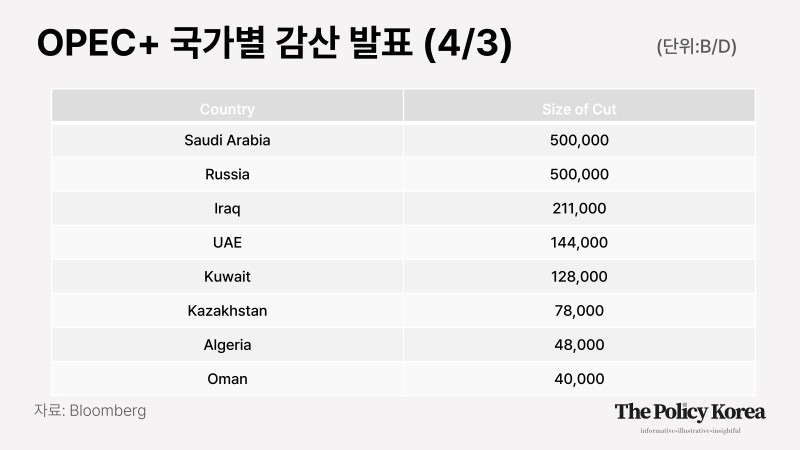[동아시아포럼] 백두산 과학외교, 대북 협력 가능성과 전망
북·러 정상회담 이후 양국 군사협력에 대한 우려 제기 백두산 화산활동 관련해 미국·영국과 공동연구 등 수행 영국 '비판적 관여' 기조, 과학 분야 대북 협력 이어가
[동아시아포럼]은 EAST ASIA FORUM에서 전하는 동아시아 정책 동향을 담았습니다. EAST ASIA FORUM은 오스트레일리아 국립대학교(Australia National University) 크로퍼드 공공정책대학(Crawford School of Public Policy) 산하의 공공정책과 관련된 정치, 경제, 비즈니스, 법률, 안보, 국제관계에 대한 연구·분석 플랫폼입니다. 저희 폴리시코리아(The Policy Korea)와 영어 원문 공개 조건으로 콘텐츠 제휴가 진행 중입니다.
지난 9월 13일(현지시간) 김정은 북한 국무위원장과 블라디미르 푸틴 러시아 대통령이 러시아 아무르주 보스토치니 우주기지에서 정상회담을 가졌다. 두 정상의 만남은 2019년 4월 블라디보스토크에서의 첫 정상회담 이후 4년 5개월 만에 이뤄진 것으로 양국의 군사적 협력을 두고 국제사회의 관심과 우려를 불러일으켰다.

유엔 등 대북 제재에도 불구, 과학기술 교류협력 지속
이날 정상회담의 의제를 놓고 다양한 추측이 나오고 있다. 공식적으로 발표하지는 않았지만 북한은 러시아에 우크라이나 침공에 사용할 포탄 수십만 발을 제공하고 러시아는 북한에 정찰위성 등 우주기술 이전하는 데 합의한 것으로 전해졌다. 이 예측이 사실이라면 이는 분명 유엔 안전보장이사회의 결의를 위반하는 것이다. 중국과 러시아가 안보리 상임이사국으로서 거부권을 가지고 있기 때문에 북한에 대한 처벌을 막을 가능성이 있긴 하지만 미국 등 주요국이나 유럽연합(EU)으로부터는 제재를 받을 수 있다.
유엔의 대북 제재는 국제 외교에서 중대하고 민감한 사안으로 북한에 대한 인도적 지원이나 과학기술 교류협력 등 광범위한 영역에 영향을 미친다. 이 중 과학기술 분야 협력사업은 환경 문제 등과 관련한 국가 간 격차를 줄이고 대화를 촉진함으로써 글로벌 공동체의 상호 이해와 참여를 제고하는 데 핵심적인 역할을 한다. 일례로 백두산 화산 활동에 대한 모니터링 등 현재 북한과 서구 국가들 간 과학기술 협력사업이 추진되고 있는데, 이를 통해 지정학적으로 복잡한 역학관계 속에서 국가 간 교류와 통합 가능성을 확인할 수 있다.
백두산 역사적·지질학적으로 가치 있어, 공동연구도 성과
중국과 북한의 국경에 위치한 백두산은 고도 2,744미터의 활화산으로 역사 문화적 중요성은 물론 중대한 지질학적 가치를 지니고 있다. 한반도의 건국신화에 따르면 백두산은 한민족의 시조인 ‘단군’의 탄생지로 단군은 한반도 최초의 왕국 고조선의 제1대 왕이다. 만주족에게는 청나라를 건국한 부쿠리 용손의 출생지로 전해지고 있으며 거란족에게는 영엄한 신화의 산, 장백산으로 불리는 등 동아시아 여러 민족에게 위대한 산으로 추앙받으며 신화적 가치를 인정받고 있다.
백두산의 화산 활동도 화산학자들 사이에서 상당한 과학기술적 가치가 있는 것으로 평가되고 있다. 분화기록에 따르면 백두산은 946년부터 1925년까지 수차례 화산 폭발이 있었다. 이 중 946년 밀레니엄 분화(Millennium Eruption)는 인류 역사상 가장 큰 화산 폭발로 지난 1883년 크라카타우 화산 폭발을 넘어서는 규모로 추정된다. 또한 백두산은 자철광, 티탄철광 등 광물자원이 밀집해 있어 전 세계 과학자들의 연구가 이어지고 있다.
최근 몇 년간 백두산을 중심으로 한 북한의 과학기술 협력사업은 주목할 만한 성과를 냈다. 지난 2016년 북한은 미국과 영국의 민간단체들과 국제연구팀을 구성해 북한 최초로 백두산에 광대역 지진계를 설치했다. 연구팀은 지진파 자료를 분석해 백두산 지하에 부분적 용융상태인 마그마가 존재함을 확인한 데 이어 밀레니엄 분화의 정확한 날짜를 추정해 냄으로써 화산폭발과 관련한 역사적 사건의 가정들을 검증하는 데 성공했다. 이렇듯 북한과 서구 국가들간의 과학기술 프로젝트는 지구물리학 부문의 국제 공동연구를 수행함으로써 북한과 주변국 간의 격차를 줄이는 데 기여한 것으로 평가받는다.
공동연구 프로젝트에 군사·외교적 의도 개입 가능성 제기
복잡한 지정학적 관계와 정치외교적 제약에도 불구하고 북한의 과학기술 협력사업은 12년간 이어져 왔다. 급변하는 국제정세 속에서도 외교적 장벽을 넘어 지속적으로 교류함으로써 인류 공동체의 복원에 있어 과학이 가지는 힘과 가치를 보여준 것이다. 백두산 프로젝트에서 북한과 긴밀히 소통하고 있는 영국은 공식적으로는 북한에 대해 적대적인 입장을 가지고 있다. 특히 북한의 핵무기 개발과 확산 위협, 인권 침해 등에 대해 강력히 비판해 왔다. 그럼에도 불구하고 백두산을 중심으로 한 과학기술 협력 사업에서는 우호적인 접근방식을 취하고 있다. 영국은 과학기술 분야에서의 신뢰와 소통이 대승적으로 북한과의 관계를 진전시킬 수 있는 해법으로 보고 있기 때문이다.
이같은 맥락에서 백두산은 국가 간 교류협력의 이상적인 플랫폼이라고 할 수 있다. 과학은 복잡하고 난해한 외교적 관계를 넘어 문화·환경·개발 분야 협력에 대한 명확한 상호 이익을 제공함으로써 국가 간 분열을 극복하고 이해를 촉진할 수 있는 기제가 되기 때문이다.
다만 과학기술 분야의 우호적인 협력이 지속됨에도 불구하고 군사·외교적으로 불순한 의도가 개입시키려는 시도가 계속되고 있다. 최근 백두산 공동연구을 지원하기 위해 16종의 수출면허가 미국과 영국, 유엔 안보리에 제출됐다. 하지만 수출하는 장비 중 일부가 이중용도(dual-use) 기술로 간주되면서 군사적으로 활용할 가능성이 있다는 우려가 제기됐고 결국 북한 내에서 사용이 제한되는 사례가 발생하기로 했다. 이러한 사례로 비춰볼 때 과학적 목표를 달성하면서도 국제 안보를 위협하지 않기 위해서는 모든 이해관계자의 유연한 대처와 협력이 필요하다.
인류 공동의 지식을 탐색하기 위한 과학외교 중요성 증대
앞으로의 지정학적 역학관계와 국제정세를 고려할 때 영국의 비판적 관여(critical engagement) 기조가 더욱 중요해질 것으로 보인다. 핵 프로그램 등 북한의 군사적 위협에 대한 주변국들의 공동 대응이 이어지고 있지만 여전히 주요국들은 과학기술과 환경 분야에서 북한과 협력할 가능성이 있다. 이는 북한에 대한 국제사회의 제재가 견고한 상황에서도 완전한 고립이 아닌 협력과 대화의 경로를 제공할 것으로 보인다.
백두산을 중심으로 한 과학적 협력은 지정학적 긴장 속에서도 국가 간 협력과 교류가 가능함을 확인시키는 동시에 과학외교의 잠재력을 보여줬다. 특히 영국의 비판적 관여 정책은 불확실한 국제 정세 속에서 대화의 가치를 증명하며 국제 외교의 새로운 패러다임으로 부상하고 있다. 이러한 관점에서 백두산 프로젝트는 국경을 초월해 인류 공동체의 지식을 공동으로 탐구하고 축적·공유하는 희망의 사례로 평가받고 있다.
원문의 공동저자인 니키 알스포드(Niki Alsford)는 센트럴랭카셔대학교(University of Central Lancashire, UCLan) 연구교수이자 아시아태평양연구소 소장입니다. 또 다른 공동저자인 제임스 하몬드(James Hammond)는 런던대학교 버크백 칼리지(Birkbeck, University of London) 지구물리학 교수이자 백두산연구소 소장입니다.

The resilience of scientific diplomacy in North Korea
On 13 September 2023, a significant event occurred at the Vostochny Cosmodrome in the Russian Far East. North Korean Supreme Leader Kim Jong-un and Russian President Vladimir Putin convened for a meeting that sparked intrigue and international concern.

Speculation was rife about the agenda of this meeting. Rumours circled that it revolved around a potential exchange of North Korean ammunition stockpiles for Russian assistance in developing space technology and resource aid. If substantiated, this would undoubtedly contravene numerous United Nations Security Council resolutions. While China and Russia, with their veto power at the Security Council, would likely shield North Korea from any punitive measures, it could still face sanctions from a number of countries or from the European Union.
These sanctions could have wider impacts on humanitarian or scientific projects, underscoring a vital and sensitive aspect of international diplomacy.
Scientific exchanges, particularly in environmental science, play an essential role in bridging gaps between nations, fostering cooperation and enhancing global understanding. One such ongoing scientific exchange is the monitoring of volcanic activity on Mount Paektu. It has emerged as a symbol of diplomacy’s unique potential to unite nations, even amid complex geopolitical dynamics.
With a towering height of 2744 metres, Mount Paektu straddles the border of China and North Korea. It is a site of immense historical, cultural and geological significance. According to Korean folklore, Paektu is the birthplace of Dangun, the founder of the first kingdom on the Korean peninsula. For the Manchu people, it holds mythical importance as the birthplace of Bukuri Yongson, an ancestor of the Qing Dynasty founders. As far back as the Khitan people of the Liao Dynasty, China has referred to it as Changbaishan or ‘long white mountain’.
Mount Paektu’s volcanic eruptions over the last few thousand years have propelled it to fame among volcanologists. Mount Paektu’s ‘Millennium Eruption’, recently dated to 946 AD, stands out as one of the largest eruptions in human history, surpassing even the infamous Krakatoa in magnitude. This geological marvel has attracted scientists from around the world, eager to unravel its mysteries and understand its implications.
Collaborative efforts centred around Mount Paektu have yielded remarkable milestones over the years. They facilitated the deployment of North Korea’s first broadband seismometers, a tool used to understand the current state of the volcano. They also enabled the first cross-border geophysical study, bridging the gap between North Korea and its neighbours. This collaboration accurately dated the Millennium Eruption, dispelling the uncertainty that had shrouded this historical event.
Despite the intricate geopolitics at play, this scientific collaboration has stood resilient for 12 years, defying political pressures and constraints. The endurance of this cooperation amid evolving circumstances speaks to the power of science as a common ground for nations to come together and transcend diplomatic hurdles.
For the United Kingdom, whose official policy toward North Korea is one of critical engagement, the collaboration around Mount Paektu is emblematic of its favoured approach. The United Kingdom is unequivocal in its opposition to North Korea’s nuclear weapons programme, proliferation activities and human rights record. Still, it recognises the value of engaging North Korea through credible dialogue, believing that continuous and sustained engagement is the path to progress.
In this context, Mount Paektu serves as an ideal platform for engagement. It offers a common ground with clear mutual benefits for cultural, environmental and developmental cooperation. It is a tangible example of how science can bridge divides and foster understanding, even in the most challenging diplomatic contexts.
Yet challenges persist. Sixteen export licenses have been submitted to the UK and US governments as well as the UN Security Council to support the ongoing work around Mount Paektu. Some of this equipment has been deemed ‘dual-use’, raising concerns about its potential military applications and curtailing its use in North Korea. Flexibility and cooperation from all parties is necessary to achieve scientific objectives without compromising security.
Looking to the future, the importance of the United Kingdom’s policy of critical engagement with North Korea becomes increasingly evident. The global community cannot afford to isolate North Korea completely, especially when there are clear opportunities in environmental science, including at Mount Paektu, which are resilient to changing sanctions and offer opportunities for collaboration and dialogue.
Ongoing scientific collaboration on Mount Paektu showcases the potential of diplomacy through science, offering a unique opportunity for nations to work together, even amid complex geopolitical challenges. The United Kingdom’s policy of critical engagement, which recognises the value of dialogue and cooperation, aligns well with the principles that underpin this collaboration.
Amid the uncertainty of international relations, Mount Paektu serves as a beacon of hope — a reminder that science can transcend borders and bring nations together for the common pursuit of knowledge and understanding. In an increasingly interconnected world facing truly global challenges such as climate change and the increasing use of sanctions, these collaborations are more crucial than ever.



























